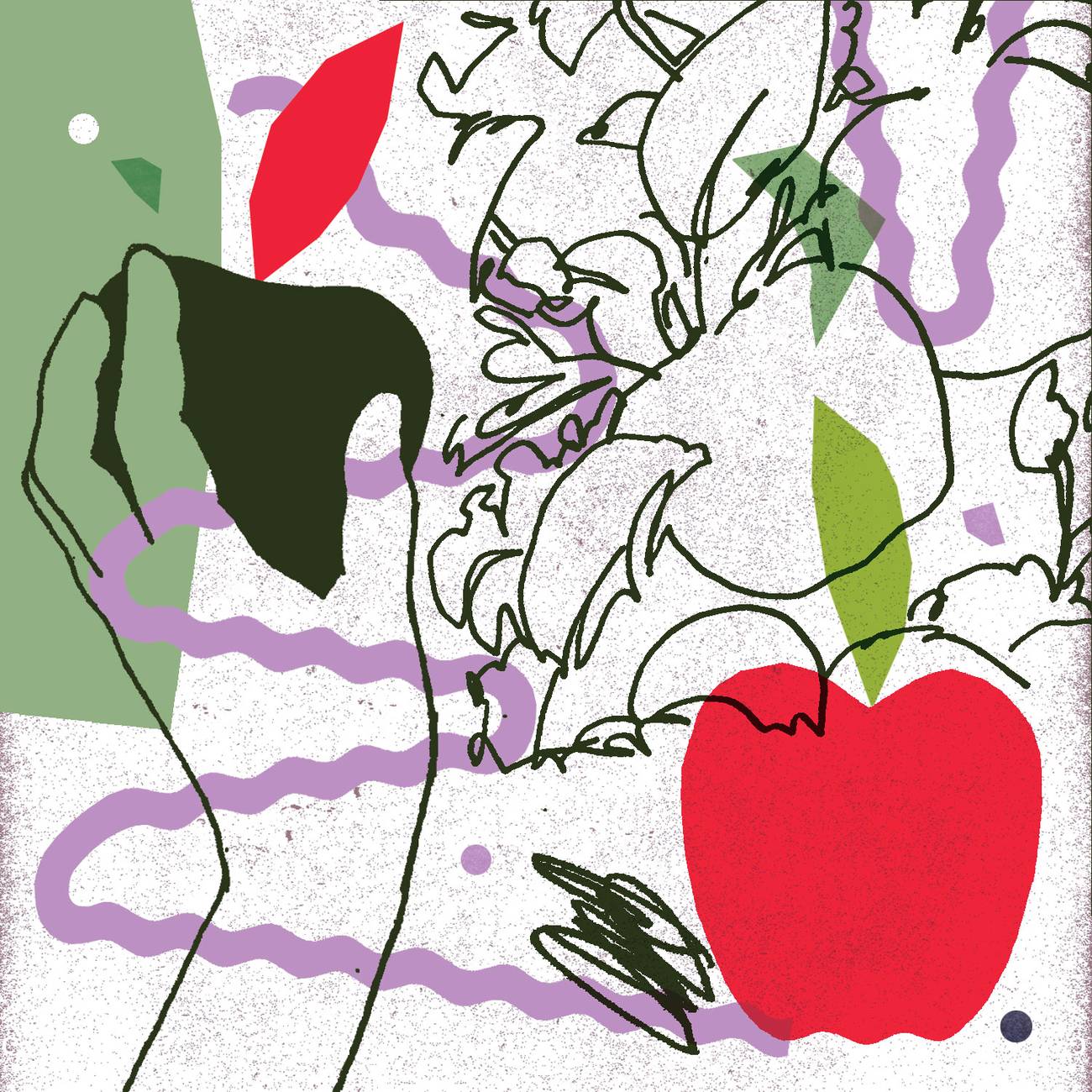Tempted by the Fruit
Apples have been a sweet addition to Jewish cooking for centuries, even if they probably weren’t actually found in the Garden of Eden

Julie Legrand

Julie Legrand

Julie Legrand

Julie Legrand
Legend has it that the forbidden fruit in the Garden of Eden was an apple, but this is disputed by historians, who speculate that it could have been a pomegranate, quince, fig, pear, or grape. Nobody knows for sure. In the Bible the forbidden fruit is called pri—but botanists and linguists claim that the word was mistranslated as “apple,” especially as the apple primarily grew wild in biblical times and was not cultivated in Israel until well after the time of King Solomon.
One of the most widely grown fruits in the world, the apple (Malus domestica) is said to originate in the mountainous region of Kazakhstan, Tajikistan, and northwest China, where forests of wild apples (Malus sieversii) have been growing for more than 4 million years. In fact, Almaty—the largest city in Kazakhstan—literally means “the place of apples.” From Central Asia the apple was brought to the Middle and Near East via the Silk Road, and then introduced to Europe by the Romans.
Apples have long played an important role in myths and legends around the world. In Greek mythology, the apple is associated with Aphrodite, the goddess of love, who was said to revere apples. At that time, to throw an apple at someone was a declaration of love, and to catch it showed that your love was accepted. On the other hand, you were spurned if your chosen one spat out the seeds. In Islamic tradition, Muhammad was said to inhale eternal life through an apple brought to him by an angel. In Norse tradition, Idun, the goddess of eternal youth, kept a wooden box full of apples to be eaten by the gods when they grew old; the apples were said to make them grow young again.
In Jewish tradition, the apple is a symbol of knowledge, immortality, desire, and temptation—because of its (likely mistranslated) association with Adam and Eve. Nevertheless, over the years the apple has come to symbolize sweetness, beauty, and good fortune, which is why slices of apple dipped in honey are served by Jews for Rosh Hashanah in the hope of a prosperous year ahead. Since apples are in season in Eastern Europe during the fall, they are traditionally used by Ashkenazi Jews to make charoset for the New Year—it’s not just for Passover!—while Sephardic Jews like to make mansanada, a kind of thick applesauce sweetened with honey and flavored with cinnamon, cloves, and cardamom. As apples can be stored well into the spring, they are widely used by Ashkenazi Jews to make all kinds of cakes, pastries, and puddings like apfelshalet, apfelkuchen, and apfelstrudel that are widely served for the Sabbath.
The first apples were brought to the United States in the 17th century, when early American settlers were encouraged to plant apple orchards. This motivated the settlers to put down roots, as apple trees could take as long as 10 years to bear fruit. At the same time, planting an apple orchard was a symbol of their achievement and regarded as proof of their mastery over the primordial wilderness.
In the medieval world, apples were attributed to have all kinds of healing powers, depending on the variety of apple used. Apples were said to relieve arthritis, sciatica, and pain during childbirth. They were also said to be an antidote to poison. The Elizabethan herbalist John Gerard also claimed a poultice of apples would relieve swelling and that “the pulp of roasted apples mixed to a froth in water and drunk by the quart” would benefit those with gonorrhea.
Today there are more than 7,500 cultivars of apples. Different types are used for different purposes, like cooking, making cider, or eating raw. One of the best-known varieties of apple is the Braeburn, which has flesh that is both sweet and tart, with overtones of nutmeg and cinnamon. It is readily available in the U.S. and is excellent for making apple cake and apple pie. Another good variety is the Fuji, which is prized for its crisp flesh; it is also very good in salads as well as puddings and pies. The Golden Delicious apple is renowned for its sweet, mild flavor that makes it good for eating raw; as it gives off little juice when cooked, it is also good for cooking, especially in apple pies and strudels. Another readily available variety in the U.S. is the tart, green Granny Smith, which is perfect for both cooking and eating fresh. Pink Lady is another good all-purpose apple with crisp flesh and a slightly sweet aftertaste. Two of the best cooking apples in the U.S. are the Gravenstein, which has a deliciously tart flavor with honey overtones and is excellent for making applesauce, and the Rome Beauty, which is good for baking as it holds its shape well when cooked.
There may be some truth in the saying “an apple a day keeps the doctor away.” Apples are rich in fiber, vitamins—especially vitamin C—minerals, and antioxidants. Recent studies show that eating apples may lower the risk of getting heart disease, Type 2 diabetes, and cancer. They are also good for the health of your gut and may help you lose weight, as they slow down digestion and keep you feeling satiated.
But most of all, they’re delicious. No wonder they’re the most enduring symbol of temptation.
Paola Gavin is a food writer and author of four vegetarian cookbooks including Hazana: Jewish Vegetarian Cooking. Follow her on Instagram @paolagavin and on Twitter @paolagavinfood.